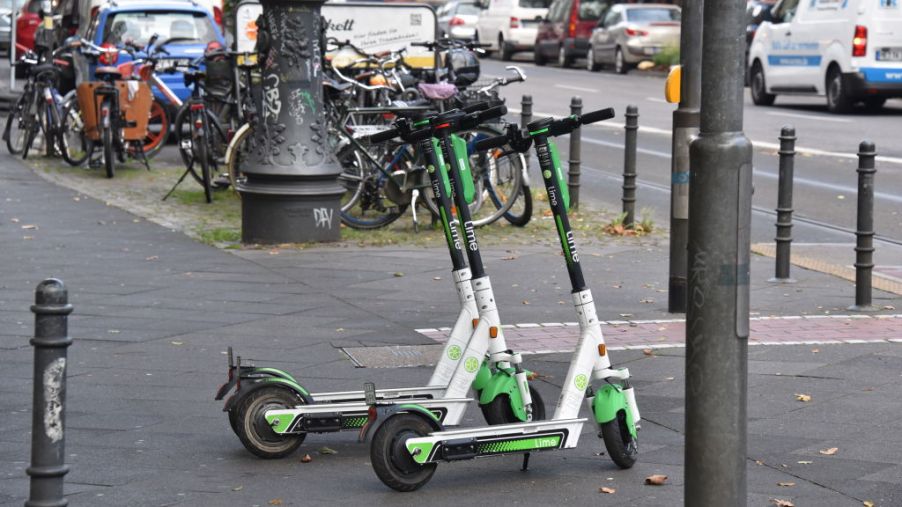
What You Should Know About Those E-Scooters That Popped Up in Your City
E-scooters are small, electric scooters that are used much like a bike. With a small, electric motor, an e-scooter can zip around a city in no time at all. With so many people trying to figure out how to fix transportation and environmental issues, could e-scooters be the future of transportation or just a safety hazard? Here’s everything you need to know about the e-scooters showing up in cities all over the world.
E-scooters in your city
In urban areas, it can be hard to get around by vehicle. Walking, riding the bus, or hopping on the train is usually your quickest option. With more and more cities trying to find ways to minimize vehicles, traffic, and carbon emissions, electric scooters seemed like a way to solve every problem.
Though they come with their own set disadvantages, e-scooters provide commuters and travelers with a low-cost, low-emission, efficient mode of transportation. But many cities weren’t all-in on the idea from the beginning.
According to Vox, cities like San Francisco began the venture as a limited-time engagement; a trial run. In the year 2017, electric scooters began popping up in cities across the country and two years later, can be found almost all around the world.
Rental companies create hubs and pickup locations all over a city that allow you to find and unlock your own scooter with an app. You ride that scooter quickly to your destination and simply hop off. Instead of returning it to its original “rack” or destination, you leave it where you stop and it is picked up someone else. But with so many e-scooters popping up on sidewalks all over the city, policymakers are struggling to keep up.
The boom of business
Once people realized that scooters could be a faster and cheaper method of transportation, it wasn’t long before companies were jumping at the opportunity.
According to Bloomberg, startups like Bird, Lime, Skip, and Spin were among some of the first to take advantage of the low-cost and quick mode of urban transportation. Now, even larger companies like Lyft and Uber are getting behind the e-scooter market.
Already, companies like Lime and Bird offer e-scooter services in more than 100 cities all over the world. Places like San Francisco are already ahead of the game with limiting the number of rental scooters on their streets, though they are considering raising it to 2,500. Though cities are trying to find the best way to handle the boom, cities like Austin, Texas have as many as 14,000 e-scooters on their streets, while Paris has an estimated 20,000.
Not everywhere welcomes the e-scooter business, however. The U.K. for example, views scooters as motorized vehicles that require a license and are subject to insurance and tax. This would make it impossible to regulate the e-scooter business and who was driving them.
Pros and cons of e-scooter transportation
People are behind the e-scooter industry for good reason. Some of the advantages of e-scooters and the benefits they provide include:
- Lower carbon emission and better for the environment than transportation in standard vehicles, trains, or busses
- Less costly than other modes of transportation, both for riders and e-scooter companies
- Quicker transportation time than walking, cars, trains, and busses
Though there are benefits to having e-scooters in your city, they do come with some drawbacks that are currently being considered strongly by officials in many cities. Here are a few of the concerns surrounding urban e-scooters:
- Safety concerns are prompting research, regulations, and bans in cities in the world after many issues surrounding e-scooters. In fact, a study done by Consumer Reports earlier in the year found more than 1,500 e-scooter injuries in the U.S. alone.
- Violations and problems with drivers of e-scooters, as many cities are finding that scooter drivers are ignoring traffic rules.
- Cluttered streets and sidewalks.


